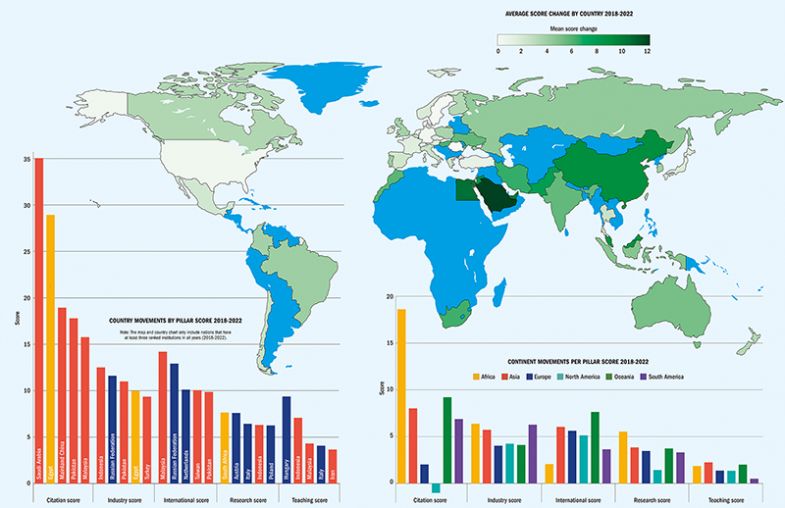Browse the full results of the World University Rankings 2022
Download a copy of the World University Rankings 2022 report
The rise of East Asian universities – and particularly those in China – is frequently cited as one of the most significant global higher education trends over the past 10 years. But these charts show that there are several other regions and nations that are making progress and could be ones to watch over the next decade.
The bar chart below shows the average pillar score change for each continent between the 2018 and 2022 editions of the Times Higher Education World University Rankings. The data show that universities in Africa have made the most progress overall, largely driven by their significant improvement in citation impact (an area where North America has declined), as well as rises in their scores for research environment and industry income. However, African universities made the least progress of all the continents in international outlook.
(Click on image for larger version)
African universities also have a higher average overall score than Asian universities (although there are far more Asian universities in the ranking), suggesting that Africa’s progress is not solely attributable to the amount of room for improvement.
The other charts provide more detail, revealing the countries that have improved the most. In the map, which shows the average score change by country between 2018 and 2022, Saudi Arabia and Egypt are the biggest risers overall, with both countries making more progress than mainland China since 2018.
The bar chart on the left, which shows the countries that have risen the most on average in each pillar, reveals that Saudi Arabia’s and Egypt’s improvements are mainly a result of a large citation impact boost, while Egypt’s industry income score has also risen. Pakistan, Malaysia and Indonesia also stand out as countries that are making progress in several areas.







